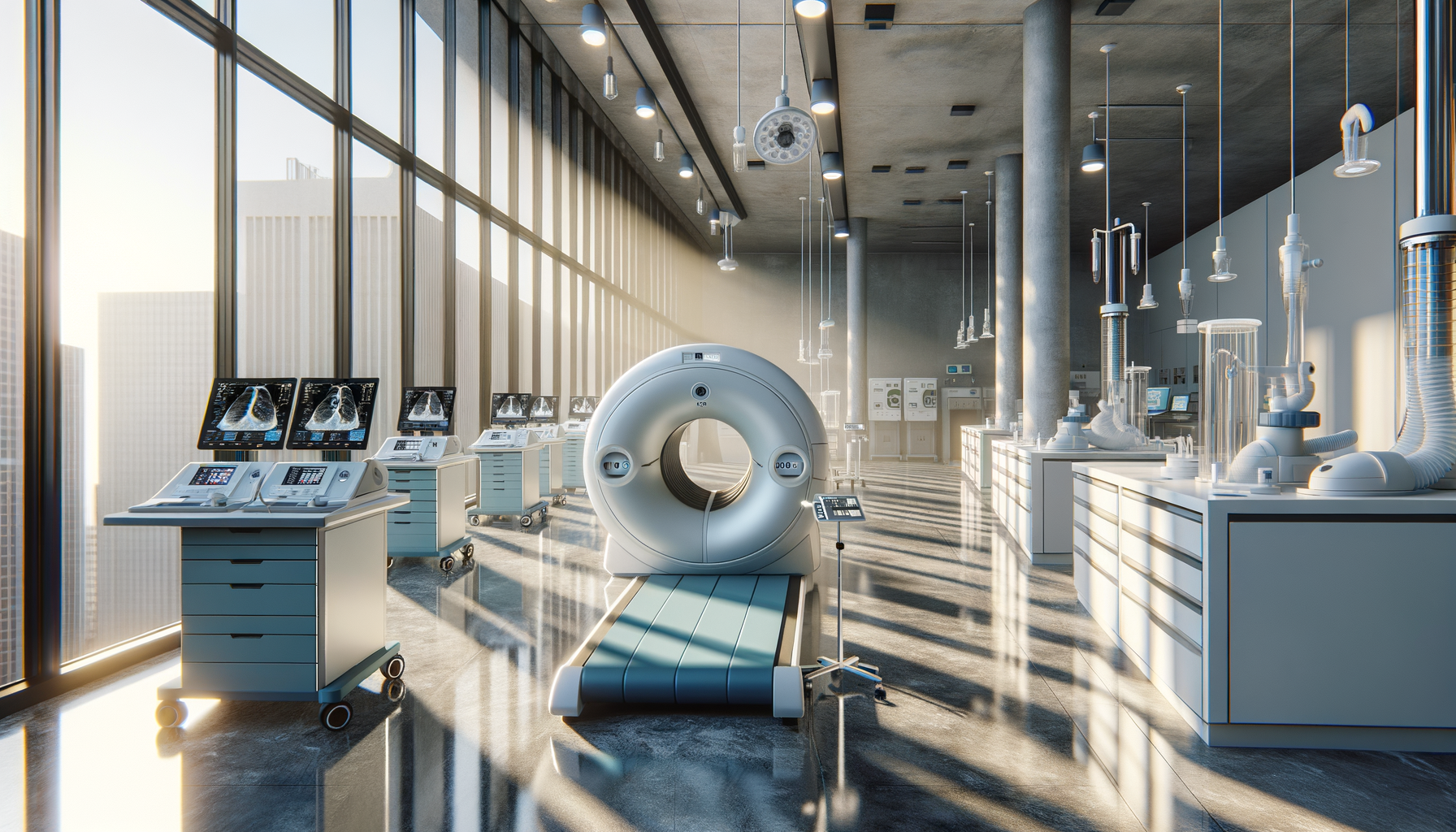
Learn More: Innovative Lung Diagnostics and Pulmonary Testing Options
Introduction to Lung Function Tests
Lung function tests are crucial in diagnosing and managing respiratory conditions. These tests provide insights into how well the lungs are working by measuring airflow, volume, and gas exchange. Understanding lung function is essential for detecting diseases such as asthma, chronic obstructive pulmonary disease (COPD), and interstitial lung disease early. With the rise in respiratory ailments, largely due to environmental factors and lifestyle changes, lung diagnostics have become a focal point in healthcare.
Advanced pulmonary testing options have evolved significantly, offering more accurate and comprehensive information about lung health. These innovations not only aid in early detection but also in tailoring specific treatment plans for patients, ensuring better management of respiratory conditions. As the understanding of respiratory diseases deepens, the integration of modern testing techniques becomes increasingly important in the medical field.
The Science Behind Lung Function Tests
Lung function tests, also known as pulmonary function tests (PFTs), encompass a variety of procedures designed to assess the respiratory system’s efficiency. The primary aim is to measure lung capacity, volume, flow rates, and gas exchange. These tests are instrumental in identifying obstructive and restrictive lung diseases.
One of the most common tests is spirometry, which measures the amount and speed of air a person can inhale and exhale. Spirometry is crucial for diagnosing conditions like asthma and COPD. Another key test is the diffusion capacity test, which evaluates how well gases such as oxygen are transferred from the lungs to the bloodstream. This test is particularly useful in diagnosing interstitial lung diseases where gas exchange is impaired.
Moreover, lung volume tests measure the total volume of air the lungs can hold, providing insights into conditions that restrict lung expansion. This is complemented by the measurement of airway resistance, which can indicate issues such as bronchial constriction. These tests collectively offer a comprehensive picture of lung function, guiding healthcare providers in making informed treatment decisions.
Innovations in Pulmonary Diagnostics
Recent advancements in pulmonary diagnostics have significantly enhanced the precision and scope of lung function tests. Technological innovations have introduced portable spirometers and advanced imaging techniques, making diagnostics more accessible and less invasive.
One notable advancement is the development of high-resolution computed tomography (HRCT), which provides detailed images of lung structures, aiding in the diagnosis of complex conditions like interstitial lung disease. Additionally, the integration of artificial intelligence in analyzing test results has improved diagnostic accuracy, allowing for more personalized treatment plans.
Furthermore, the emergence of digital health technologies has revolutionized pulmonary care. Remote monitoring devices now enable continuous tracking of lung function, facilitating early intervention and better management of chronic conditions. These innovations not only enhance patient care but also reduce the burden on healthcare systems by preventing hospital admissions through timely interventions.
The Role of Lung Function Tests in Disease Management
Lung function tests play a critical role in the management of respiratory diseases. By providing detailed insights into lung performance, these tests help in tailoring treatment plans to individual needs, ensuring optimal care.
For patients with COPD, regular lung function testing is essential for monitoring disease progression and adjusting treatment regimens. These tests help in assessing the effectiveness of medications, such as bronchodilators and corticosteroids, by measuring improvements in airflow and lung capacity.
In asthma management, lung function tests are used to evaluate the severity of the condition and guide medication adjustments. They also help in identifying triggers and assessing the response to treatment, enabling patients to maintain better control over their symptoms.
Moreover, in cases of interstitial lung disease, lung function tests are vital in monitoring disease progression and response to therapies. Early detection through regular testing can lead to timely interventions, potentially slowing disease progression and improving quality of life.
Conclusion: The Future of Lung Diagnostics
The future of lung diagnostics holds promise with ongoing research and technological advancements. As our understanding of respiratory diseases evolves, so too will the methods for diagnosing and managing these conditions.
Emerging technologies, such as biomarker analysis and genetic testing, are set to revolutionize lung diagnostics by offering even more personalized and precise care. These innovations will likely lead to earlier detection and better management of respiratory diseases, ultimately improving patient outcomes.
In conclusion, lung function tests are indispensable tools in the fight against respiratory diseases. With continued advancements in technology and a deeper understanding of lung health, the future of pulmonary diagnostics looks promising, offering hope for improved respiratory care and quality of life for patients worldwide.


